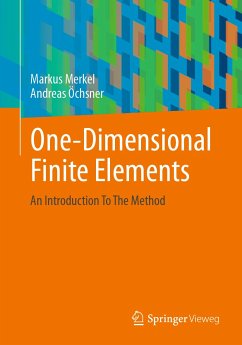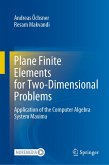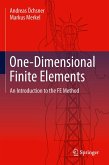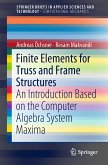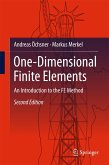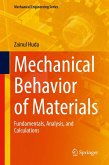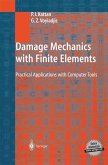The emphasis in each chapter is on explaining the method and understanding it. Readers learn to understand the assumptions and derivations in various physical problems in structural mechanics and to critically evaluate the possibilities and limitations of the finite element method.
This approach enables the methodical understanding of important topics, such as plasticity or composites, and ensures an easy entry into more advanced application areas. Detailed calculated and commented examples and further tasks with short solutions in the appendix support the learning success.
In the third edition of this textbook, the basic concept for the treatment of the finite element method with one-dimensional problems has been retained. Additionally, thermoelasticity has been included, as well asnumerous tasks with solutions supplemented.
The content
Introduction.- Motivation to the finite element method.- Beam element.- Analogies to the extension bar.- Bending element.- General 1D element.- Plane and spatial frame structures.- Beams with shear component.- Beams of composite material.- Nonlinear elasticity.- Plasticity.- Stability (buckling).- Dynamics.- Special elements.- Appendix.
The target groups
Students and computational engineers in professional practice
The authors
Prof. Dr.-Ing. Markus Merkel
studied mechanical engineering at the University of Erlangen-Nuremberg and earned his doctorate there at the Chair of Engineering Mechanics. He has been a professor at Aalen University since 2004 and represents the finite element method in teaching.
Prof. Dr.-Ing. Andreas Öchsner
studied aerospace engineering at the University of Stuttgart and earned his doctorate at the University of Erlangen-Nuremberg. He has been a professor of mechanical engineering at Esslingen University of Applied Sciences since 2018 and is responsible, among other things, for training students in lightweight construction and structural simulation.
This book is a translation of an original German edition. The translation was done with the help of artificial intelligence (machine translation by the service DeepL.com). A subsequent human revision was done primarily in terms of content, so that the book will read stylistically differently from a conventional translation.
Dieser Download kann aus rechtlichen Gründen nur mit Rechnungsadresse in A, B, BG, CY, CZ, D, DK, EW, E, FIN, F, GR, HR, H, IRL, I, LT, L, LR, M, NL, PL, P, R, S, SLO, SK ausgeliefert werden.

